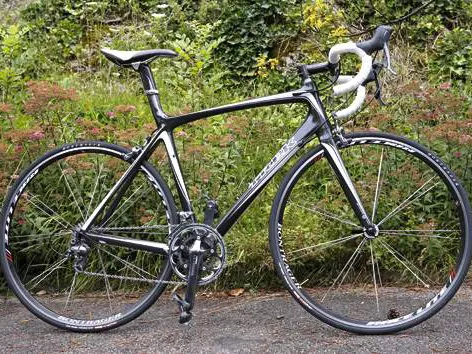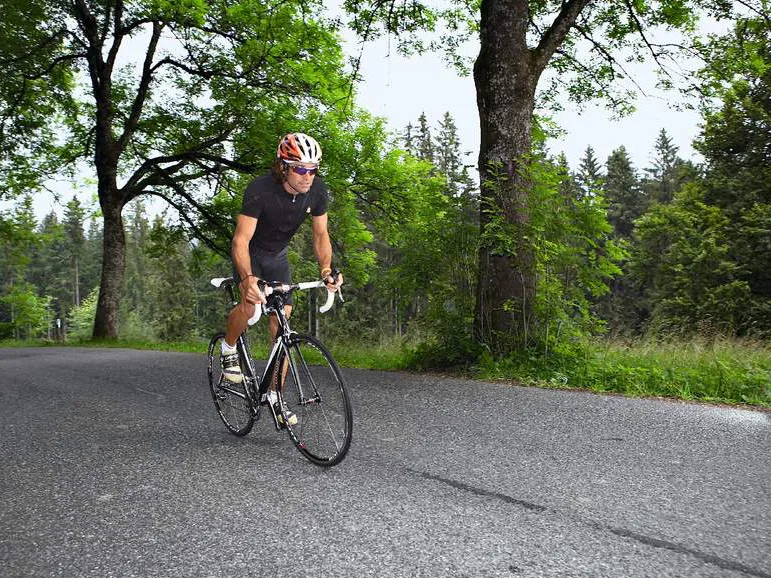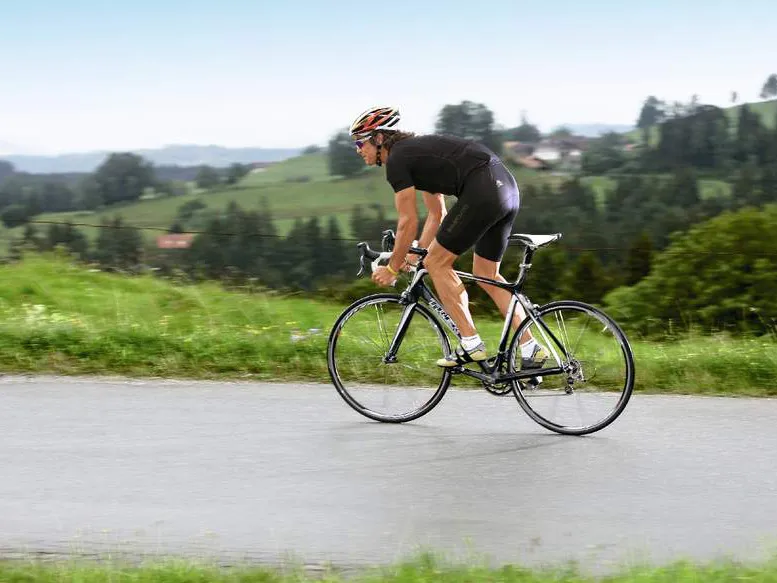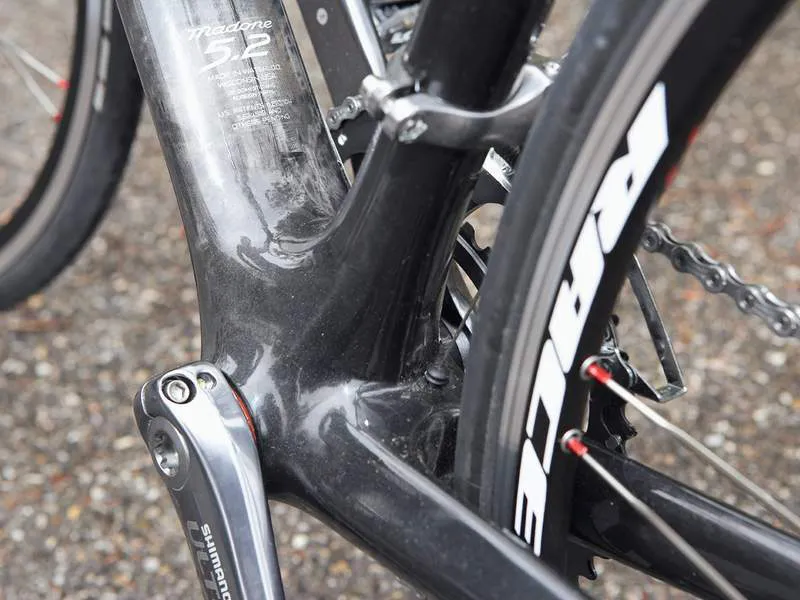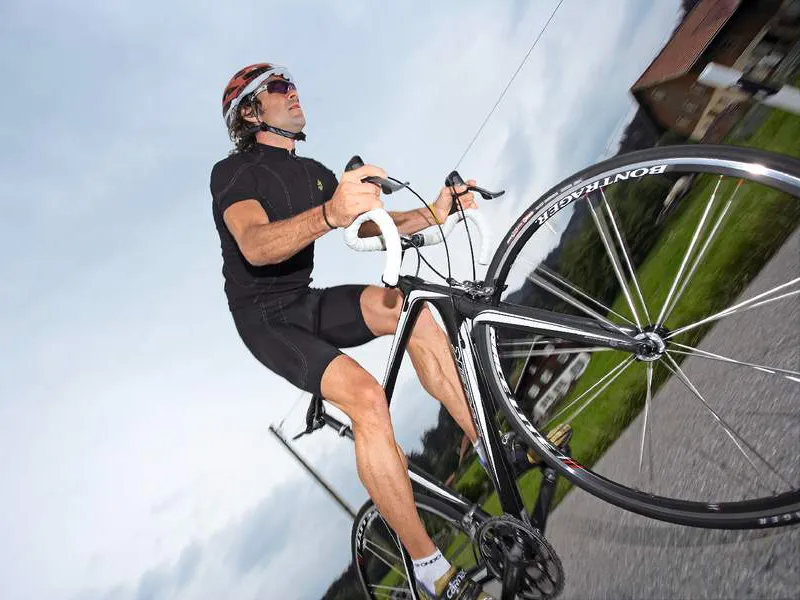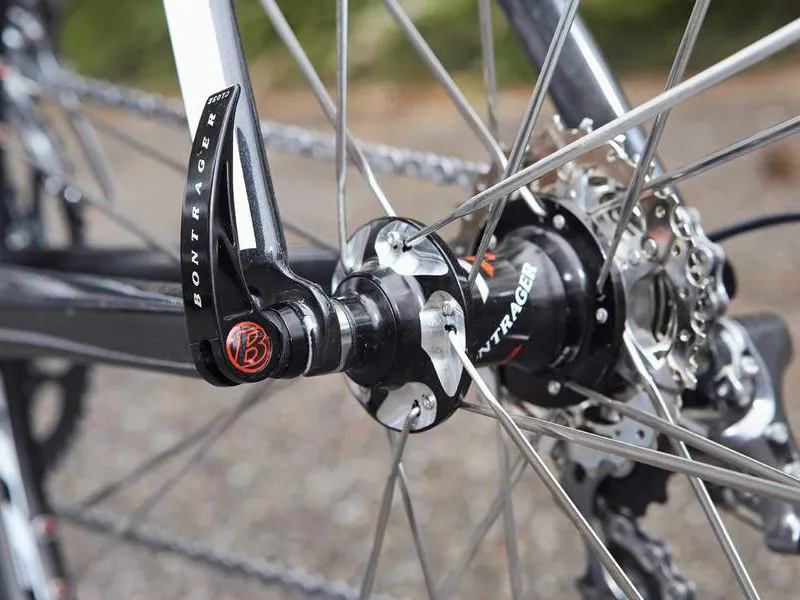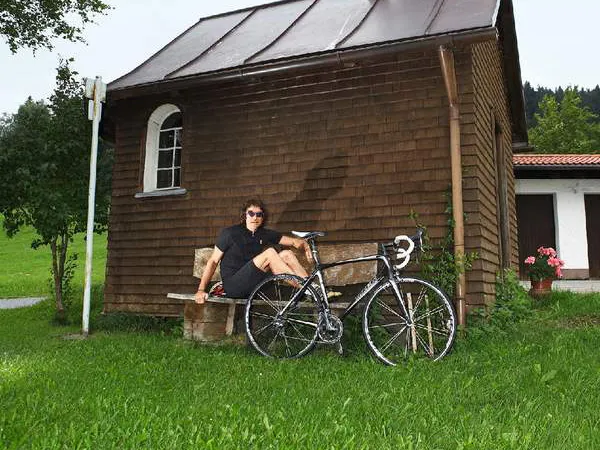Trek's Madone isn’t just any bike. It’s a Tour-winning machine conceived and built by a company that employs as many carbon engineers as other frame manufacturers have employees. This latest incarnation is startlingly comfortable despite Trek's justified claim of increased rigidity. Once again, it's a bike fit for Tour de France winners.
When a frame has won the Tour de France as often as Trek’s Madone, you expect great things of its latest incarnation. Of course, the speed of a racing bike is mostly down to the person riding it, but, on the strength of its predecessor, I was looking forward to taking the new Madone 5.2 for a spin. I wasn't disappointed.
Ride & handling: impeccably balanced, predictable & fun
Right from my initial acceleration and the way the new Madone performed on the first climb, I knew the frame was top class. That feeling was confirmed when I dropped into my first steep descent. Thanks to its balanced geometry, the bike behaved impeccably, carving predictably through every bend. Even riding around very tight curves was fun!
The Madone 5.2 is built using Trek’s OCLV carbon and although I tried to find some flex, I didn’t notice any. Instead, what struck me during my test ride was the impressive degree of comfort this rigid frame affords. Even long training rides on poor roads won’t turn into bone-jarring trips from hell.
Much of the Madone 5.2’s confidence-inspiring predictability is the result of the its headtube/fork combination: on high-speed curves it almost felt like the Trek was on rails.
Even late and very hard braking with the grippy Ultegra brakes failed to rock the boat. Accelerating out of the curves in a high gear was a joy too.
The Madone certainly deserves the accolade “fit for Tour de France winners”. And if it’s good enough for them, it should be more than good enough for the rest of us.
I was completely convinced by Trek’s choice of components – the handlebars, stem and wheels all do their job very well and contribute to the bike's sure, steady but fun feel. My only grumble was that the saddle wasn’t comfortable enough for my liking.
Frame: New details, improved stiffness
What’s new in this version of the Madone? Well, for a start there’s the Madone’s 90mm wide bottom bracket. Its bearings are built directly into the carbon housing, dispensing with the need for the usual screwed-in bearing shells. The advantage of this is a significant increase in seat-tube rigidity in the bottom bracket area – by around 48 per cent according to the manufacturer – as well as full compatibility with the bottom brackets of all of the renowned component manufacturers.
Although the frame is really solid, I reckon the figure quoted on Trek’s homepage seems a little high. I find it hard to believe that the old Madone was flexible enough to make its successor almost 50 per cent better.
The fork promises similar improvements. Trek claims it offers the same rigidity while shaving 120g off the weight of the previous model. This is achieved by a new manufacturing process that enables the carbon fibres to be aligned at the steerer tube.
The Madone is a bike whose appeal, apart from its light weight and stiffness, lies in its great design. The transition from the headtube to the toptube works really well, and there are similarly smooth lines where other tubes connect, giving the frame a really fast and futuristic look.
These sleek lines are complemented by the integrated seatpost, which is anything but run-of-the-mill. This aerodynamically formed carbon blade doesn’t just look good, it also removes some pressure from the seatpost clamp. The seat mounting bracket slides over the shaft and is fixed in place by two diagonally opposing Allen bolts.
The Madone’s top coat is a kind of anthracite-effect paint that’s transparent enough to reveal the structure of the carbon fibre frame beneath. Pearly white stripes that run along the main stretches of tubing add a classy touch, and the wishbone rear triangle further enhances the bike’s overall feeling of style. The white handlebar tape and saddle will take a bit of looking after – but then, for anyone who’s decided to plump for a bike like this, a bit of TLC to preserve its immaculate styling is a small price to pay.
Equipment: Terrific new Ultegra, good finishing kit, grippy tyres
I can only describe the performance of Shimano’s brand new Ultegra SL groupset as terrific. The compact version featuring 50- and 34-tooth chainrings was just what I needed on all of the climbs I took on during my test ride. This completely new and improved version of the Japanese component manufacturer’s second-ranking gruppo will delight every Shimano fan: its darkly anodised aluminium has a very classic look. Best of all, the performance of the brakes is hugely impressive.
However, there’s no accounting for taste, and anyone who didn’t like the design before is unlikely to be won over by the new Ultegra. Personally, I think the brake levers are still slightly too large. That said, I never had any problems shifting gears no matter how tight the tension was on the chain. Movement between the sprockets was effortless.
You have to wonder how much better the new (and much pricier) Dura-Ace will be once it’s on the market. For potential buyers, the Ultegra groupset will have the advantage of making the new Madone more affordable.
The Trek’s wheels are light and stable enough for riders who don’t produce the power of Tom Boonen – and let’s face it, there aren’t too many of those around. They look good too. The design of the hubs – all in black, with notches for engaging the spokes – is mirrored by the bike’s chainrings. The red spoke nipples are exactly the same colour as the Bontrager logo on the quick-release levers.
Twenty flat spokes at the front and rear make for good aerodynamics; the wired-on tyres gave me a real sense of security, even when pumped up really hard. On the few wet curves I came across, the grip was good enough to ensure there were no close encounters with the tarmac. That said, I didn’t push it too close to the limit. I’m a bike tester, not a stuntman.
When I sprinted, I felt hardly any distortion in the Madone’s Bontrager Race Lite stem or handlebars, which provided plenty of space for my hands in all of the key grip positions, ensuring a comfortable ride.
I haven’t heard of another frame manufacturer who is quite as uncompromising in the choice of accessories they supply with their standard bikes. However, given the fact that Bontrager is a Trek subsidiary, the whole thing makes sense. And besides, the standard of Bontrager’s components is definitely as high as those of other renowned producers.
Conclusion: top-class race bike with Tour-winning flair
The 2008 Madone 5.2, equipped with Shimano’s new Ultegra SL groupset, is a top-class racing bike that will give anyone who likes its looks a lot of pleasure on the road. The new frame already has the flair of a Tour de France winner.
The only downside is that Trek supply the standard editions of their bikes with a specific choice of components. So if, for example, you want a Dura-Ace or SRAM groupset, you will have to look higher up the range, which is topped by the 6.9 Madone Pro now being used by Alberto Contador and the Astana team.
That minor gripe aside, this is a successful new edition of a classic bike that has a Tour-winning pedigree.

